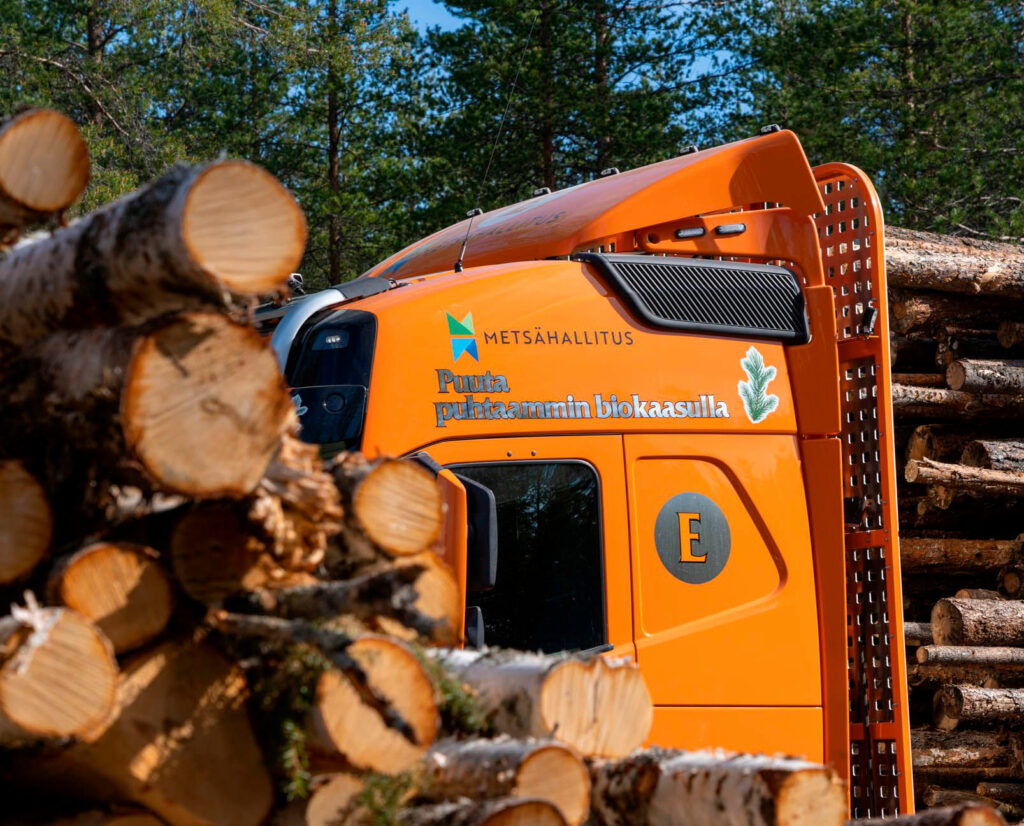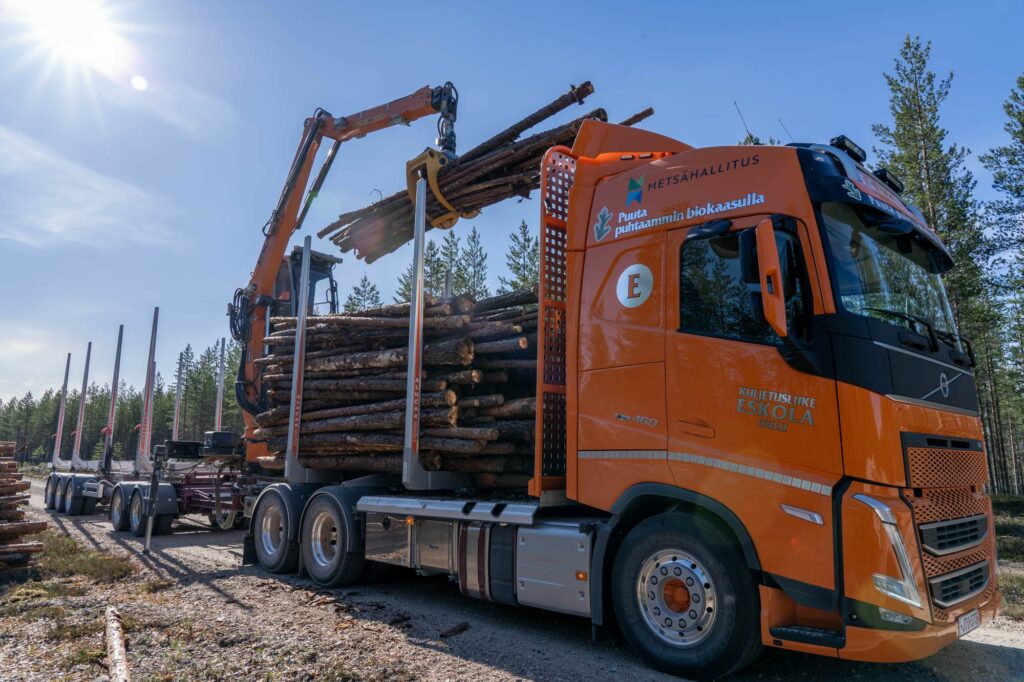
Metsähallitus will start using biogas produced from waste and industry by-flows in timber transports. The new fuel produces up to 90% less life-cycle greenhouse gas emissions than fossil fuels. The vehicle running on liquefied biogas (LBG) is the first timber truck with a full trailer using biogas in Europe.
‘Responsibility is at the core of everything. Our promise is to develop solutions that help move from a fossil economy to a bioeconomy and demanding technology with increasingly low emissions. A biogas vehicle is part of this palette that we use to seek solutions,’ says Heikki Kääriäinen, Director of Timber Supply at Metsähallitus.
The vehicle operates in the Oulu region and started operating at the beginning of June. The company operating the vehicle is Kuljetusliike Eskola.
‘Based on the first few days, this has been a positive experience and the vehicle has worked really well. We wanted to get involved because reducing emissions also applies to our sector. Reforming is important so that we don’t get left behind development,’ says Pasi Eskola, the entrepreneur at Kuljetusliike Eskola.
The greatest obstacle for the introduction of renewable fuels has been the slow growth of the refuelling network. Biogas is currently available at one refuelling point in Oulu. However, good driving arrangements and roadside storage planning ensure that this does not pose a major problem.
A biogas vehicle gets its fuel source from domestic waste, such as biowaste and manure, and industrial by-flows. According to Gasum, currently only about 4% of the biogas production potential has been utilised in Finland *. The potential amount of biogas produced in biogas plants has been estimated at about 10 TWh per year.
Biogas is a fully renewable raw material and its life-cycle greenhouse gas emissions are up to 90% lower** than for fossil fuels, and it also produces significantly less fine particulate matter and nitrogen oxides.
‘Biogas is one of the most environmentally friendly fuels on the market. In addition to emissions, we are interested in, for example, refuelling infrastructure and the economy and suitability of biogas for timber transport. We believe that using biogas will also be a cost-effective solution,’ says Jouni Karjalainen, Development Manager at Metsähallitus.
Logging and transportation are Metsähallitus’s biggest sources of emissions. In connection with its Climate Programme, Metsähallitus has developed and tested climate-friendly transport and logging methods together with its partners. For example, in 2021, renewable diesel was introduced for use in timber transports, and trials and research have also been carried out on High Capacity Transport (HCT) and Longer and Heavier Trains (LHTs). The use of biogas in transport is studied together with the University of Eastern Finland and Metsäteho.
Further information
Heikki Kääriäinen, Director of Timber Supply, Metsähallitus Forestry Ltd, tel. +358 (0)20 639 5002
Jouni Karjalainen, Development Manager, Metsähallitus Forestry Ltd, tel. +358 (0)20 639 6665
Kuljetusliike Eskola, entrepreneur Pasi Eskola, tel. +358 444 333 101
Photos: Antti Pylväs, Haukimedia

* https://www.gasum.com/en/insights/energy-of-the-future/2020/biogas-as-part-of-the-circular-economy/
** Gasum’s greenhouse gas emission calculations are based on the sustainability criteria by the Energy Agency and the determination of greenhouse gas emission savings in accordance with the Renewable Energy Directive RED (EU Renewable Energy Directive 2009/28/EC). Gasum’s calculations are confirmed annually by external and independent third-party audits. Carbon dioxide (CO2), nitrous oxide (N2O) and methane (CH4) emissions are taken into account in the calculation of greenhouse gas emissions. The value 83.8 g CO2eq/MJ is used as a reference value for fossil fuels (RED Directive).